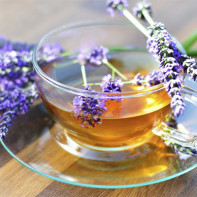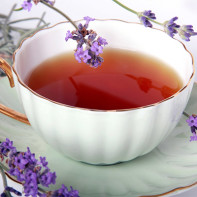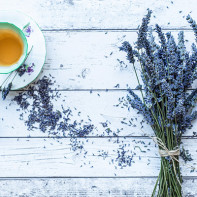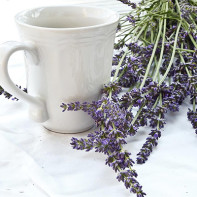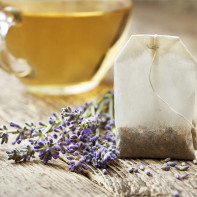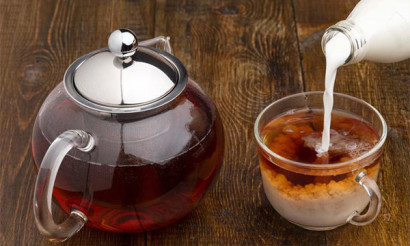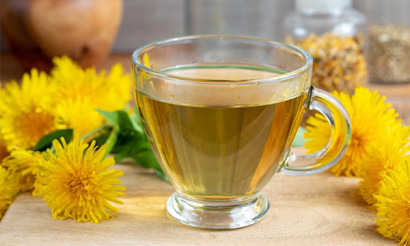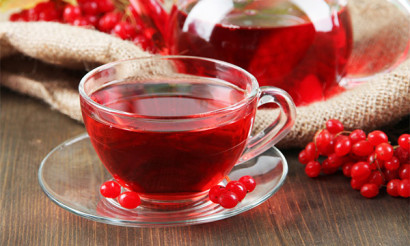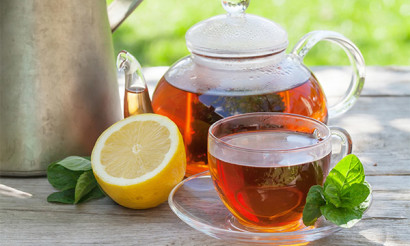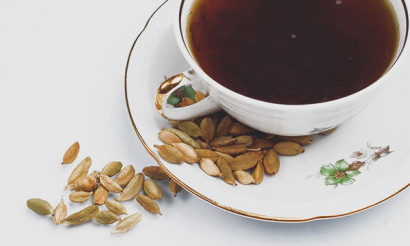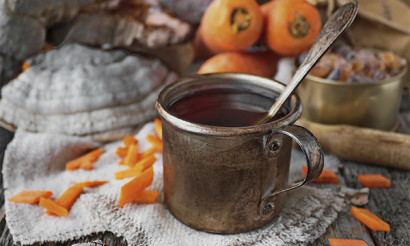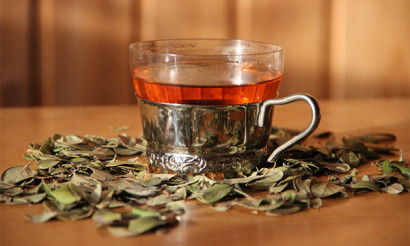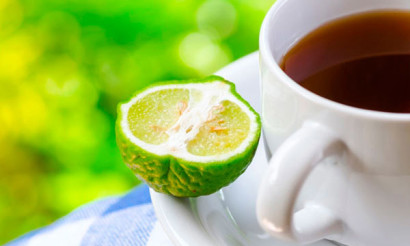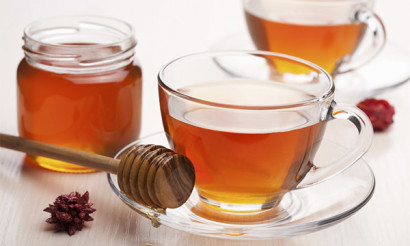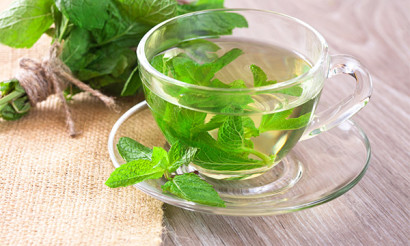Lavender tea: useful properties and contraindications
Lavender is known everywhere in the world. Even if it does not grow in any region, it is necessarily imported there, as this plant is used both as a spice and as a medicinal or cosmetic agent.
The lavender is a semi-shrub up to about 0.6 meter tall with a diameter of about 1 meter. But plant breeders have succeeded in breeding varieties that reach a height of 2 m. The plant has a straight stem on which there are leaves - linear and bent with grayish-lobed pubescence. Its flowering is during the summer months. It is at this time that the flowering stems are cut off and gathered into bundles and thoroughly dried.
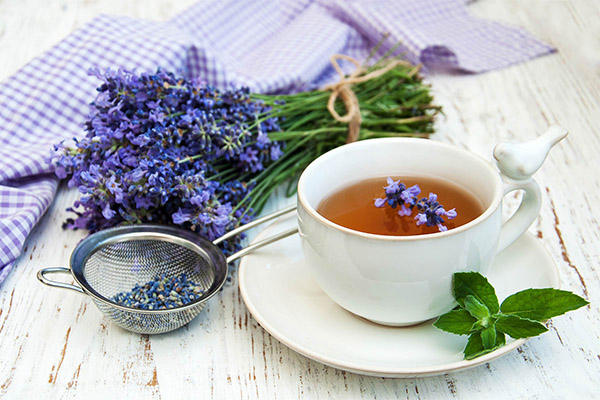
Lavender is used in pharmaceutical, cosmetic, perfume and culinary applications such as spice and drink. Many people like to make their own teas because lavender is soothing, which is much needed for modern life.
The flowers of the plant are small, bright purple, lilac, with blue hues, characterized by a strong aroma, spicy taste with a sense of bitterness.
Composition and calories
The flowers of the plant have a very high content of essential oil - up to 3%, in the leaves - up to 0.35%, in the stems - up to 0.20%. The most valuable component of lavender essential oil is linalyl acetate (up to 50%). Scientists have proven that this substance is a powerful stimulant of cell regenerative functions.
The plant contains such beneficial substances:
- Cineol. Is an excellent antiseptic, helps get rid of phlegm.
- Tanin. Has a positive effect in inflammatory-infectious lesions, ulcers and burns of the mucous membranes of the mouth, nose, throat. Effective during poisoning with salts of heavy metals.
- Citral. Refers to antiseptic agents, has anti-inflammatory and analgesic effect. Therapeutic effect on inflammatory processes in the eye area.
- Ursulic acid. Very beneficial to human health due to its antimicrobial and anti-inflammatory qualities. It shows cardio-stimulating and anti-atherosclerotic effects, fights tumor growths.
- Valerian acid. Necessary to stimulate the motility of the colon.
- Capronic acid. Helps the normal function of the circulatory system, enhances the detoxification function of the liver, destroys influenza viruses in the early stages.
- Triterpene compounds. Essentially, these are biologically active carbon compounds. Needed by the human body to fight against tumors, germs and various viruses.
- Tannins. They have a hemostatic, anti-inflammatory, astringent effect, block the influence of pathogenic flora. Promote rapid healing of wounds, as well as strengthening the walls of blood vessels. On the mucous membrane of the stomach form a special film with a protective base, thereby preventing inflammation and damage.
- Borneol. First of all, it is an excellent antiseptic, which has analgesic and tonic effect, helps get rid of stress and relieve nervous tension, tones the heart. It can improve blood circulation and stimulate digestion.
- Coumarin. Slows the blood clotting process, has a special flavor.
- Organic acids. Their important role is manifested in metabolic processes.
- Mineral salts. Every cell of the body needs these substances, otherwise the person can die. Actively involved in life, normalize many functions, promote hematopoiesis and tissue regeneration, support the alkaline-acid balance.
- Lavandulol. Derived from essential oils. Has a bactericidal effect. Most often is an integral component of perfume products.
- Bitterness. Has tonic and restorative effect on people. Used when it is necessary to establish the digestive process, for exhaustion, neurasthenia or loss of strength. Stimulate and restore metabolic processes.
- Resin. Treats skin diseases, inflammatory respiratory tract, some stomach problems, heals the intestinal microflora.
The caloric value of dried lavender is 23 kcal per 100 grams. Protein - 4 g, fat - 0.7 g, carbohydrates - 0.2 g.
Useful properties of lavender
Due to the presence of valuable substances this plant:

- During colds and the flu has a healing effect.
- Normalizes blood circulation.
- Relieves headaches, especially those associated with neurological problems and nervous exhaustion.
- Restores strength in the short term.
- Helps in the acute stage of rheumatism.
- Removes attacks of irritability and anxiety.
- Removes feelings of fatigue, removes the state of aggressiveness.
- Fights insomnia and treats eating disorders.
- It has diarrheal qualities and increases the acidity of gastric juice.
- It improves blood circulation and relieves bronchial spasms.
- It is an excellent stimulant of cerebral circulation.
- Removes toxic substances from the body.
- Promotes rapid healing of bruises or burns, septic wounds or boils, acne and sprains.
- It is an anthelmintic.
- Relaxes the blood vessels and muscles around the head, neck and around the eyes, helps get rid of eyelid twitches.
How Lavender Tea Works
Tea, brewed with lavender, has a unique taste and special aroma. It has a harmony of bitterness and astringency which gives it a tangy flavor. But at the same time, it has a sweetness that lingers after the tea is finished.
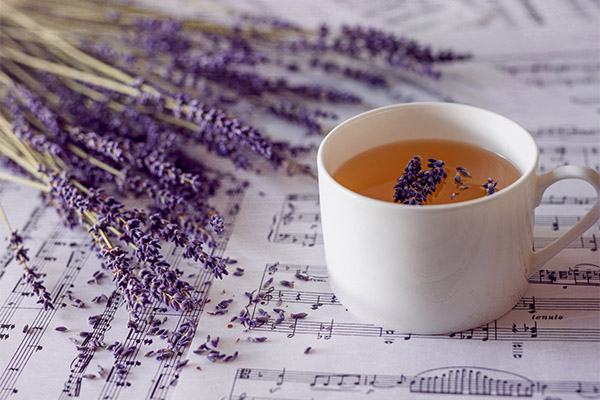
For women
Many women suffer from premenstrual migraines, but lavender tea will get rid of these painful symptoms. Lavender contains a small amount of prototypical female hormones, so if you have gynecological diseases, you need to drink this tea every day. To do this, pour 200 ml of boiling water over half a teaspoon of crushed flowers, add honey, and let it infuse for 10 minutes. By the way, such a tea is useful during a cold or as a preventive measure.
Such a drink helps many women during the onset of menopause, relieving stress and excessive irritability.
For men
The invaluable effect of lavender tea is that it benefits patients suffering from prostatitis or adenoma of the prostate. The fact that the plant affects the urogenital system, relieving pain during urination, stops the inflammation. After long physical exertion drink with lavender will help restore strength. You can make baths for tired legs - they will reduce stress and relieve cramps in the muscles.
Pregnancy
During pregnancy, it is better not to take lavender tea, because the high content of active substances and compounds can adversely affect the development of the fetus. It has been proved that the essential oils in the plant provoke the contraction of the smooth muscles of the uterus. This can lead to miscarriage.
When breastfeeding.
Lavender tea should be taken with great caution and in very small doses. It is better to give it up in the first 3 months after childbirth, because it can cause an allergic reaction in the baby. But such a tea will be useful if the nipples were formed cracks. By smearing the affected areas with this herbal drink, you can achieve rapid healing of wounds. Lavender has a special substance, citral, which when applied to the skin is not absorbed.
For Children
For children, lavender poses a certain threat. In the body of boys, the plant can suppress male hormones, stimulating the activity of female hormones, which is highly undesirable. Hyperactive children may benefit from lavender baths and aromatherapy.
At the first symptoms of a cold or viral infection will help inhalation with lavender. But before using the plant as a medicine for children, it is always necessary to consult a doctor.
Lavender tea in medicine
Medics often advise the use of tea with lavender as an effective diuretic.
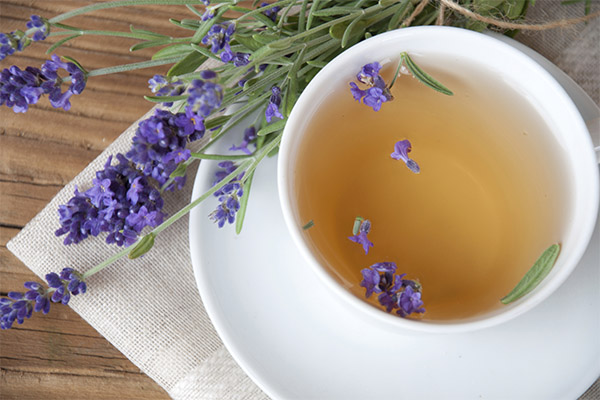
The drink is often used:
- When it is necessary to relieve a person's nervous tension, increase stamina, performance and activity.
- In the complex therapy of cardiovascular disease.
- As a supplement to medications for paralysis after a stroke.
- In indigestion or abdominal bloating, intestinal malaise or colic.
There are courses of treatment developed by doctors specifically with herbal decoctions and teas.
Harms and contraindications
Any herbal tea can cause side effects. Lavender is no exception.
- Such a drink is not recommended for people with a tendency to high blood pressure, especially if they take medications with a significant content of iodine or iron.
- Because of its high content of bioactive substances (the plant has about 250), uncontrolled addiction to lavender tea can provoke an allergic reaction. This may be manifested by a skin rash, headache, chills, dizziness or vomiting and nausea.
- If lavender tea is consumed frequently and in large quantities, gastrointestinal distress, colic, and abdominal discomfort can occur.
Doctors warn that lavender tea should not be drunk by:
- People with liver abnormalities;
- pregnant and lactating women;
- children;
- Patients with hyperacidity of gastric juice;
- People with low blood pressure;
- Patients who have had surgery.
Recipes for Lavender Tea
- Dry raw materials are usually used for tea, and each hostess has her own cooking secrets. But there is a classic recipe: 1-2 tablespoons of flowers per glass of boiling water. To make the tea pleasant in taste and beneficial properties, it is brewed for 10-15 minutes.
- The concentrated beverage is prepared a little differently. For a glass of boiling water take 5-6 tablespoons of crushed flowers. Usually this strong tea is used if the throat is inflamed, as well as in the form of lotions for the treatment and disinfection of wounds and burns, hair rinsing.
- If you need to treat digestive disorders, folk healers offer this recipe: one teaspoon of flowers pour 200 ml of boiling water, under a closed lid let stand for 5 minutes. The result is a fragrant and pleasant-tasting drink, which should be taken twice a day. To make the taste more refreshing and delicate, you can add a small amount of peppermint.
- If a person is diagnosed with cataracts, you can fight it with the help of lavender tea. You will need fennel seeds and crushed dried lavender leaves - half a teaspoon each. Fennel seeds should preferably be preheated in a frying pan, until they take on a light golden hue. Mix the components and place them in a container. Pour boiling water and let infuse for five minutes. When the drink is infused, it can be drunk both hot and cold.
- Stomach cramps can be treated with a brewed drink: pour a teaspoon of crushed flowers with a glass of boiling water. After 10 minutes, the tea is ready. Drink for several days two glasses a day.
- For the prevention of colds or at the first symptoms, take lavender (a few sprigs together with flowers), put it in a liter container and pour boiling water. When the drink becomes warm, add a tablespoon of honey and half a teaspoon of vodka. Drink the tea, lie down, cover and go to sleep.
This tea should be brewed in a glass or porcelain bowl and the walls heated with boiling water. You can use the plant many times, but each time you need to increase the infusion time.
Interesting Facts about Lavender

- Lavender does not have that name for nothing. It comes from the Latin verb "lava," which means "to wash. The ancient Romans used to add lavender to their baths to give their skin a fresh, healthy-looking and beautifully scented texture.
- The priests held lavender in high esteem because they believed it could repel the very devil. For this reason, Catholic priests necessarily used it in their handshakes and parishioners wore crosses made from the inflorescences.
- Legend has it that Mary gave it to her as a gift from her mother after she dried baby Jesus' clothes on a lavender plant.
- Lavender tea is said by connoisseurs to have certain miraculous properties: It is an astounding self-knowledge and can ward off envy.
- It is also used in various magical rituals. For example, take an odd number of twigs, brew them in the classical way, drink some of them, and wipe your face with the remaining amount, uttering the cherished words. This way, magicians say, it is possible to remove even the most dangerous spoilage.
These days the lavender is remembered at a festival dedicated to the plant. It is held every year in many countries, but is particularly popular in Provence, where there are huge farmlands and whole fields where countless fragrant flowers bloom every summer. Of course, first and foremost, it is a commercial event: bargains are made here. But for tourists who look forward to the next festival, there are many lavender-related surprises. Many people are also attracted by trips to the lavender fields. Cooks prepare a variety of dishes with the plant, from salads to desserts to unusual sweets, as well as drinks, up to and including alcoholic ones. There is a large assortment of perfume and cosmetic products.
«Important: All information on this site is provided solely for introductory purposes only. Before applying any recommendations, please consult with a specialist. specialist before using any recommendations. Neither the editors nor the authors shall be liable for any possible harm caused by materials."

